How to Choose Quality Meat Market Supplies
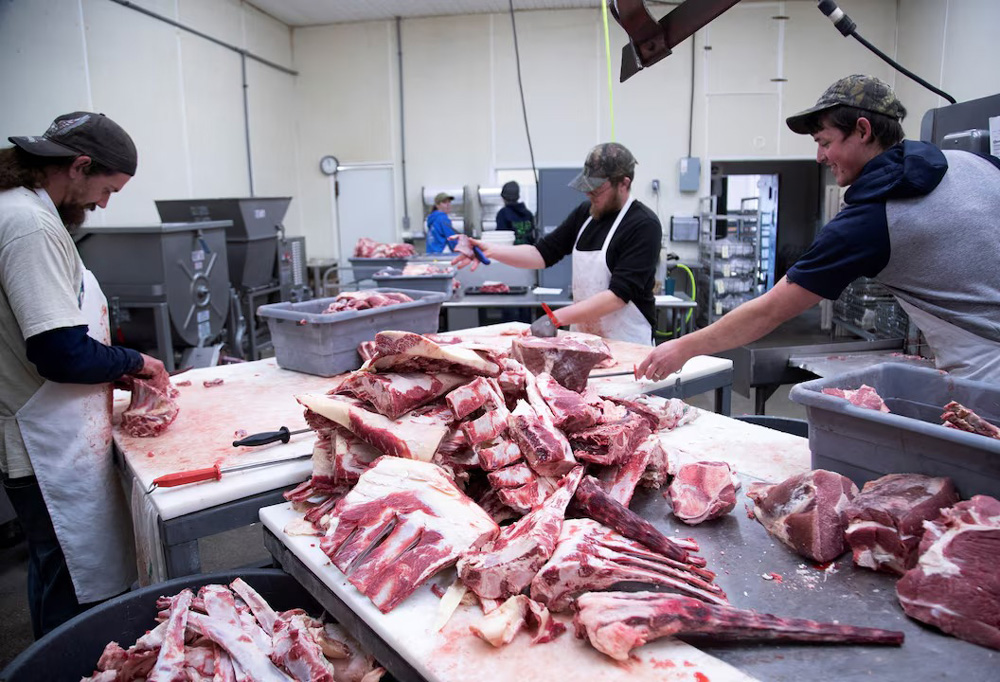
Introduction: Understanding the Importance of Quality Meat Market Supplies
In the highly competitive meat market industry, the tools, equipment, and supplies you use can make or break your business. Running a successful meat market requires more than just offering high-quality products; it demands a meticulous focus on the equipment that facilitates the preservation, processing, and presentation of your meats. From refrigeration systems to packaging materials, every detail plays a pivotal role in maintaining product quality, ensuring safety, and satisfying your customers. This article explores the significance of investing in quality meat market supplies, detailing everything from storage solutions to customer-facing displays, all designed to elevate your business.
Why Choosing the Right Meat Market Supplies is Crucial for Your Business
Selecting the appropriate supplies for your meat market is not merely about functionality but about shaping your brand's reputation. Quality tools and equipment impact everything from how efficiently you operate to the freshness of the products you offer. When you invest in reliable and high-performance equipment, you're not only safeguarding your products but also reinforcing customer trust. Every item, from cutting tools to refrigeration units, should be chosen with care to ensure your business runs smoothly while delivering top-notch service.
The Role of Quality Supplies in Customer Satisfaction and Safety
Customer satisfaction is intricately tied to the quality of your products and the standards you maintain in your market. Using high-quality supplies ensures that your meat is stored, processed, and displayed safely, minimizing the risk of contamination or spoilage. This level of care not only keeps your customers safe but also builds trust and loyalty, crucial elements for a thriving business. The right supplies allow you to maintain hygiene, improve operational efficiency, and ultimately deliver a better experience to your customers, which is the cornerstone of long-term success.
The Basics of Meat Market Supplies
Defining What Constitutes Meat Market Supplies
Meat market supplies encompass a broad range of tools, equipment, and materials necessary for meat processing, storage, and presentation. These include everything from cutting tools like knives and cleavers to specialized refrigeration units and packaging materials. Ensuring that each of these supplies is up to industry standards is essential for maintaining product quality and compliance with health regulations.
Key Categories of Supplies Every Meat Market Needs
Meat markets rely on several categories of supplies to function effectively:
- Meat Handling Equipment: Knives, cleavers, and saws for cutting, as well as other utensils for preparation.
- Storage Solutions: Commercial refrigerators, freezers, and vacuum sealers for preserving the freshness and safety of meat.
- Packaging Materials: Everything from shrink wrap to butcher paper, ensuring that meat is presented and preserved in an appealing and safe manner.
- Sanitation and Hygiene Supplies: Products like sanitizers, gloves, and cleaning agents to ensure a sanitary environment.
- Display and Presentation Equipment: Display cases, lighting, and signage to attract customers and showcase the quality of your products.
The Impact of Proper Equipment on Meat Quality and Freshness
The right equipment can profoundly impact the quality and freshness of meat. For example, commercial refrigerators with precise temperature control preserve meat at its optimal state, slowing bacterial growth and maintaining texture. On the other hand, inadequate storage or outdated equipment can lead to spoilage, waste, and dissatisfied customers. When you choose the best supplies, you’re ensuring that every cut of meat remains fresh from slaughter to sale, providing your customers with a product they can trust.
Meat Handling Tools and Equipment
Knives, Cleavers, and Saws: Essential Tools for Meat Processing
A meat market’s arsenal of cutting tools is fundamental for processing meat efficiently and cleanly. Knives, cleavers, and saws need to be sharp, durable, and designed specifically for the type of meat you handle. Different cuts and types of meat—whether beef, poultry, or pork—require tools that allow for precision and safety. Investing in quality cutting tools not only improves operational efficiency but also ensures the safety of your staff, minimizing the risk of accidents in the workspace.
Meat Tenderizers and Mincers: Tools for Preparation
Tenderizers and mincers are indispensable for enhancing meat texture and preparing it for various cuts. A meat tenderizer helps break down tougher fibers, while a mincer allows you to grind meat for sausages, burgers, or other processed items. These tools ensure that each product meets your customers' expectations, especially for specialty items that require additional preparation.
Cutting Boards and Workstations: Creating a Safe and Efficient Workspace
A cluttered or disorganized workspace can lead to inefficiency, accidents, and contamination. High-quality cutting boards and well-designed workstations facilitate smooth operations while maintaining a clean environment. Choose boards made from durable, non-porous materials to prevent bacterial growth and ensure easy cleaning. A good workstation setup improves speed and safety, allowing your team to work quickly while maintaining high standards of hygiene.
Storage Solutions for Meat Markets
Commercial Refrigerators and Freezers: Keeping Meat Fresh and Safe
The importance of proper refrigeration cannot be overstated in the meat market. Meat is highly perishable, and keeping it at the right temperature is essential to maintaining its freshness, flavor, and safety. Commercial refrigerators and freezers designed for meat storage offer features like adjustable temperature controls, humidity regulation, and energy efficiency. These advanced systems ensure that your products remain fresh and compliant with food safety regulations.
Vacuum Sealers: Preserving Freshness and Extending Shelf Life
Vacuum sealing is one of the most effective ways to preserve the freshness of meat while extending its shelf life. By removing air from the packaging, vacuum sealers prevent oxidation, freezer burn, and bacterial growth. This process is particularly beneficial for meats that need to be stored for longer periods or for customers who prefer purchasing in bulk.
Proper Meat Storage Techniques to Maintain Quality
Beyond having the right storage equipment, implementing proper techniques is equally important. For instance, meat should always be stored at the correct temperature, with raw products kept separate from cooked ones. Moreover, labeling and rotating stock regularly helps reduce waste and ensures the oldest products are sold first. These techniques guarantee that your meat remains of the highest quality and ready for sale when customers arrive.
Packaging Materials: Protecting and Presenting Meat
The Role of Packaging in Meat Freshness and Hygiene
Packaging plays a dual role in both preserving meat and presenting it to consumers. It protects meat from contaminants, prevents moisture loss, and helps to maintain its natural color and texture. With the right packaging, meat remains hygienic, fresh, and appealing, which directly impacts customer satisfaction.
Choosing the Right Type of Meat Packaging: Plastic, Paper, and More
Meat packaging options range from plastic wrap and butcher paper to vacuum-sealed pouches and trays. Each type offers distinct benefits depending on the nature of the meat and how long it will be stored. For instance, plastic wrap is ideal for short-term storage, while vacuum-sealed bags are better for preserving freshness over a longer period. Choosing the right material based on your specific needs helps you balance quality, cost, and sustainability.
Eco-friendly Packaging Solutions for the Sustainable Meat Market
As sustainability becomes a higher priority for consumers, eco-friendly packaging has gained traction in the meat industry. Options like biodegradable plastic, paper-based trays, and recyclable shrink wrap offer viable alternatives to traditional packaging. Making the shift to eco-conscious materials not only meets consumer expectations but also helps reduce your market's environmental footprint.
Sanitation and Hygiene Supplies
Sanitizers and Cleaning Products: Essential for Maintaining a Clean Environment
A clean environment is paramount in a meat market, where hygiene directly impacts both the safety of your products and the reputation of your business. Sanitizers, disinfectants, and specialized cleaning products designed for foodservice environments ensure that work surfaces, tools, and storage areas remain free from harmful pathogens. Regular cleaning and sanitization help prevent cross-contamination and guarantee that your market complies with food safety standards.
Personal Protective Equipment (PPE) for Butchers and Staff
Ensuring that staff wear appropriate PPE is essential for maintaining a sanitary workspace. Gloves, aprons, and face shields protect workers from injury and contamination while handling meat. These items not only keep your employees safe but also prevent any potential cross-contamination between raw and cooked products, further ensuring food safety.
How to Create a Sanitary Meat Market That Meets Health Regulations
Meeting health and safety regulations is non-negotiable in the meat industry. A sanitary meat market is one that adheres to strict cleaning protocols, maintains proper storage conditions, and ensures that employees follow hygiene best practices. Regular inspections and staff training are key components in maintaining compliance with local health codes, safeguarding both your business and your customers.
Display and Presentation Equipment
Meat Display Cases: The Key to Attractive Product Presentation
An attractive and well-organized meat display is crucial for enticing customers and encouraging impulse buys. Display cases are available in various styles, from open air counters to refrigerated units, each offering features designed to showcase the quality of your products. Choosing the right display case helps highlight the freshness and variety of meats you offer, making them more appealing to your customers.
Lighting Solutions for Showcasing Meat Products
Effective lighting plays a critical role in how your meats are perceived by customers. Proper lighting enhances the color and texture of your products, making them look fresh and appetizing. Investing in adjustable lighting systems that provide both visibility and ambiance ensures that your meat display is as attractive as possible.
How to Display Fresh Cuts to Maximize Sales
Displaying fresh cuts in a visually appealing manner can increase customer interest and drive sales. Use clear signage to highlight special cuts or promotions, and arrange products in an organized and accessible manner. Thoughtful presentation makes it easier for customers to browse, leading to higher sales and repeat business.
Frequently Asked Questions (FAQs)
1. What are the most important supplies for a meat market?
The most essential supplies for a meat market include meat handling tools like knives, cleavers, and saws, refrigeration units for proper storage, vacuum sealers to preserve freshness, packaging materials to protect and present meat, and sanitation supplies to maintain a clean environment. Investing in high-quality equipment in these areas ensures that your business runs smoothly, meets health regulations, and provides fresh, safe products to customers.
2. How do I choose the right refrigeration system for my meat market?
When selecting a refrigeration system, consider factors such as size, temperature control, energy efficiency, and storage capacity. Commercial refrigerators and freezers designed for meat storage should have adjustable temperatures and humidity control to maintain optimal freshness. It's also important to ensure that the refrigeration units comply with local food safety regulations and are easy to clean and maintain.
3. Can I use standard packaging for meat, or should I opt for specialized materials?
While standard packaging materials might suffice for other products, meat requires specialized packaging to maintain its freshness, prevent contamination, and extend shelf life. Vacuum-sealed bags, butcher paper, and plastic trays are commonly used for meat packaging. Each type of packaging serves a unique purpose, whether it's preserving freshness, presenting the product attractively, or complying with food safety standards. Choosing the right packaging material is crucial to protecting both the quality of the meat and your brand reputation.
4. How can I ensure the cleanliness and hygiene of my meat market?
Maintaining cleanliness in your meat market involves a combination of effective sanitation practices, proper storage, and hygiene management. Use food-safe sanitizers and disinfectants to clean surfaces, tools, and equipment regularly. Ensure that your staff wears personal protective equipment (PPE) such as gloves, aprons, and face shields to minimize the risk of contamination. Implementing a strict cleaning and sanitation schedule, coupled with employee training, is key to maintaining a hygienic environment that meets health regulations.
5. What type of display cases should I use to showcase meat products?
When selecting display cases, focus on those that provide proper refrigeration and visibility. Display cases should be designed to keep meat at safe temperatures while showcasing the products in an appealing manner. Options include open-air refrigerated units or closed glass cases that prevent contamination. The display should also incorporate appropriate lighting to highlight the freshness and quality of your meats, making them more enticing to customers.
6. How do I choose the right cutting tools for my meat market?
The choice of cutting tools depends on the types of meat you handle and the cuts you offer. For basic processing, sharp, durable knives and cleavers are necessary, while saws may be needed for larger cuts or bones. Additionally, consider specialized tools like meat tenderizers or mincers for specific processing needs. Quality tools are essential for ensuring precise cuts and maintaining safety in the workplace. Regular sharpening and maintenance are necessary to keep these tools in top condition.
7. What are the benefits of using vacuum sealers in a meat market?
Vacuum sealers help preserve the freshness and quality of meat by removing air from the packaging. This process prevents oxidation, freezer burn, and bacterial growth, extending the meat’s shelf life. Vacuum sealing also improves the appearance of the product and reduces waste, making it a crucial tool for any meat market that wants to offer high-quality products while minimizing loss due to spoilage.
8. How can I ensure that my meat market meets health and safety regulations?
To comply with health and safety regulations, ensure that all equipment meets local food safety standards, including refrigeration systems, cutting tools, and sanitation supplies. Regular cleaning, proper storage practices, and staff training are also critical to maintaining compliance. Staying up-to-date with changing regulations and conducting regular inspections will help ensure that your meat market operates within legal guidelines while safeguarding both your employees and customers.
9. Are there any eco-friendly packaging options for meat markets?
Yes, there are several eco-friendly packaging options available for meat markets, including biodegradable plastic films, recyclable trays, and compostable wraps. These options help reduce the environmental impact of packaging waste while meeting consumer demand for sustainable practices. Choosing eco-friendly packaging not only supports sustainability but also enhances your brand’s reputation as an environmentally responsible business.
10. What is the best way to store processed meats to ensure freshness?
Processed meats should be stored in refrigeration or freezer units with precise temperature control. For long-term storage, vacuum sealing can be used to preserve freshness and prevent spoilage. It's also essential to store processed meats separately from raw products to avoid cross-contamination. Labeling and rotating stock regularly ensures that older products are used first, reducing waste and maintaining product quality.
11. How can technology help improve my meat market operations?
Technology can streamline operations by automating inventory management, improving processing efficiency, and enhancing customer service. Meat market software can track inventory, monitor sales trends, and help with reordering supplies. Additionally, integrating weighing systems with point-of-sale (POS) systems ensures accurate pricing and smooth transactions. Embracing new technologies like automated butchering or packaging systems can also increase productivity and ensure consistent product quality.
12. How do I build a relationship with suppliers for my meat market?
Building strong relationships with suppliers is crucial for securing better pricing, timely deliveries, and access to the latest products and innovations. Start by communicating your needs clearly, being transparent about your business goals, and maintaining consistent and open communication. A mutually beneficial relationship with suppliers leads to more favorable terms, better customer service, and improved product quality.
13. How can I ensure that my meat market offers high-quality, ethically sourced meat?
Ethically sourcing meat involves working with suppliers who follow humane practices and adhere to environmental sustainability standards. Look for certifications such as organic, free-range, or grass-fed labels that verify the ethical sourcing of meat. By offering ethically sourced products, you not only meet the growing consumer demand for sustainable food but also differentiate your market as a socially responsible business.
14. What should I consider when purchasing new equipment for my meat market?
When purchasing new equipment, consider factors such as durability, compliance with health regulations, ease of use, and the specific needs of your meat market. Quality equipment may come with a higher upfront cost, but it provides long-term savings through improved efficiency, lower maintenance costs, and better product quality. Also, consider the potential for future expansion and whether the equipment can handle your growing needs.
15. How do I avoid mistakes when purchasing meat market supplies?
Common mistakes include skimping on quality, failing to maintain equipment, and overlooking the long-term costs of purchasing cheap supplies. Always prioritize durability, safety, and compliance when making purchases. Regularly maintain and inspect your equipment to ensure it’s functioning properly. Additionally, avoid outdated equipment, as it may not meet current health and safety standards. Investing in quality supplies and maintaining them well will save you money in the long run and ensure your business operates smoothly.
Conclusion: The Path to Success with the Right Meat Market Supplies
Recap of Essential Meat Market Supplies Every Business Needs
To run a successful meat market, investing in quality supplies is essential. From handling tools like knives and cleavers to storage solutions and eco-friendly packaging, each element plays a critical role in maintaining product quality and operational efficiency. A well-equipped market ensures your products are fresh, safe, and presented beautifully to your customers.
The Long-Term Benefits of Investing in High-Quality Equipment
High-quality meat market supplies are not just an upfront expense—they are an investment in your business's long-term success. Quality equipment improves efficiency, reduces waste, and ensures the safety and freshness of your products. Over time, this leads to increased customer satisfaction, a stronger brand reputation, and greater profitability.
How the Right Supplies Can Set Your Meat Market Apart from the Competition
In a competitive market, the right supplies can make all the difference. By choosing equipment and materials that enhance both the quality and presentation of your meats, you set your business apart from others. Whether through eco-friendly packaging, state-of-the-art refrigeration, or innovative processing tools, the investment in quality supplies will elevate your business and attract loyal customers.
Must-Read Blogs For Chain Restaurants Owner




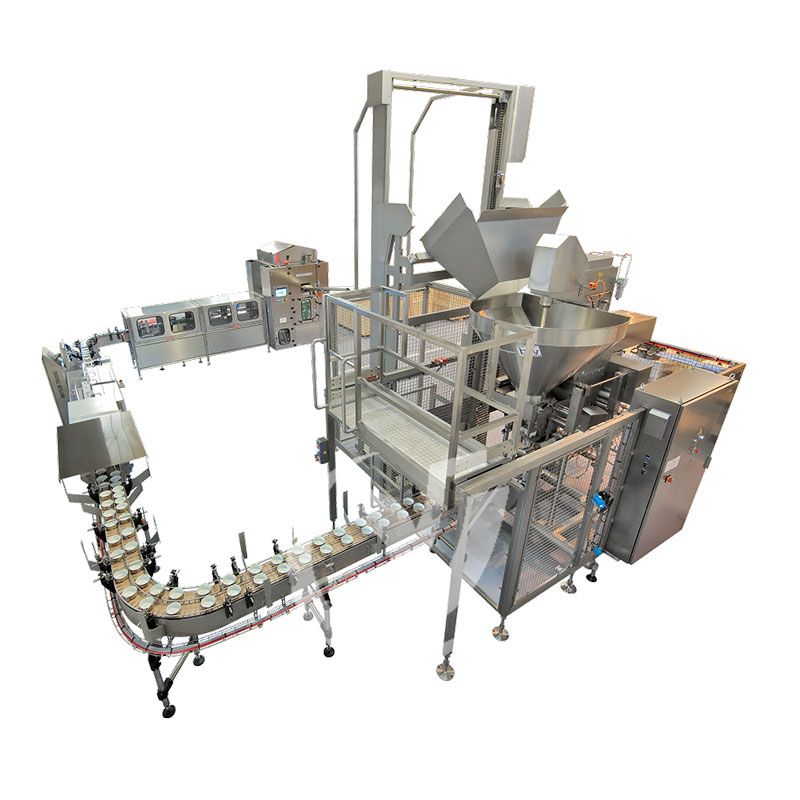


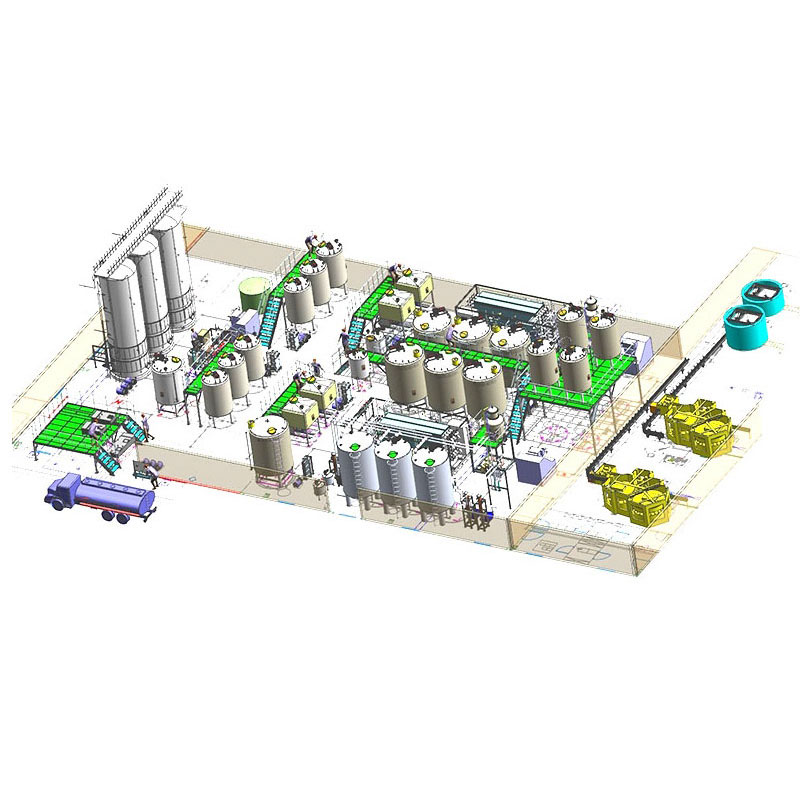


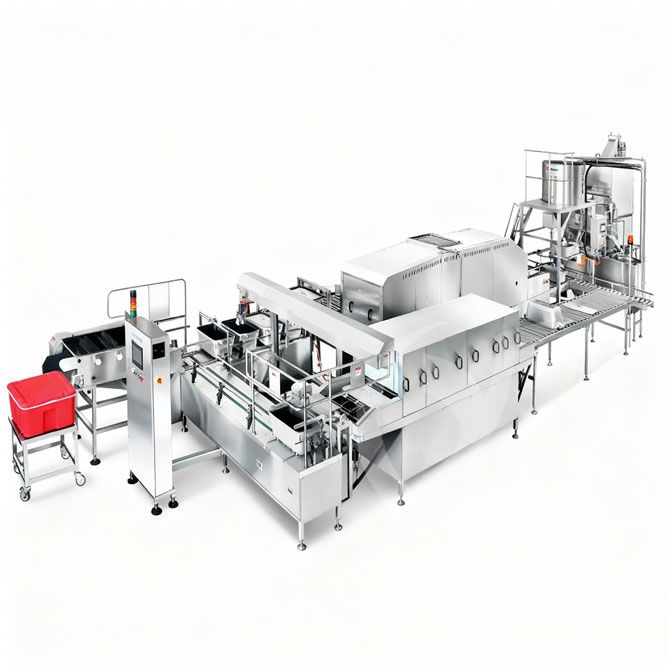
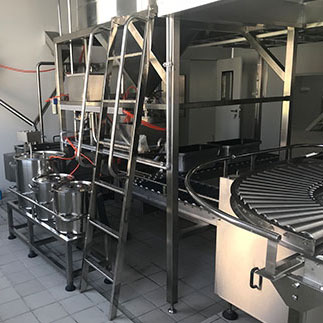 Cold Chain Rice Production Line
Cold Chain Rice Production Line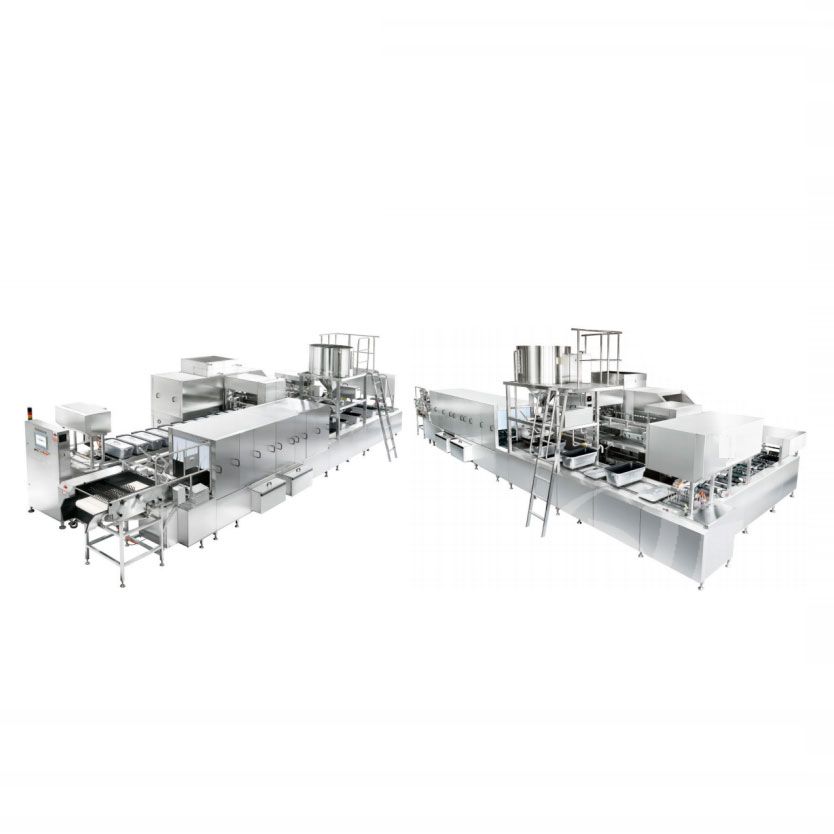 Unmanned Intelligent Rice Production Line
Unmanned Intelligent Rice Production Line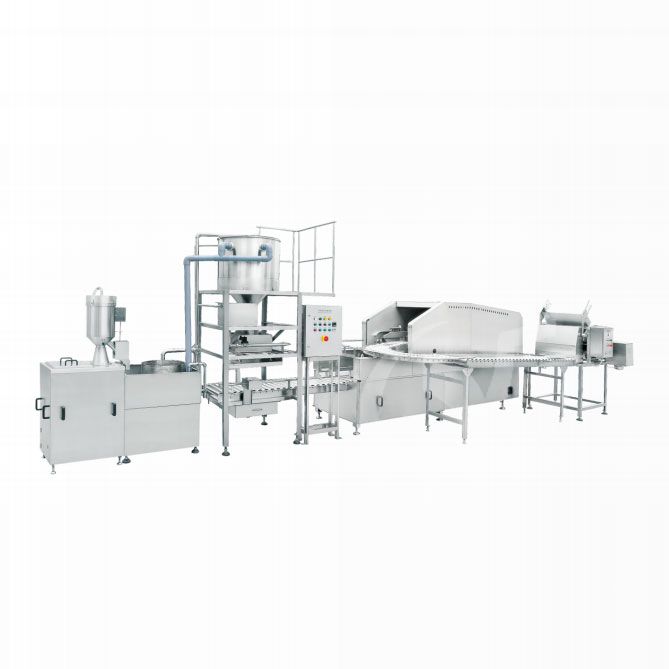 Automatic Rice Production Line
Automatic Rice Production Line
Ready to Get Started?